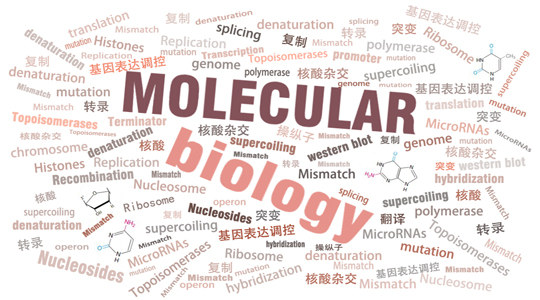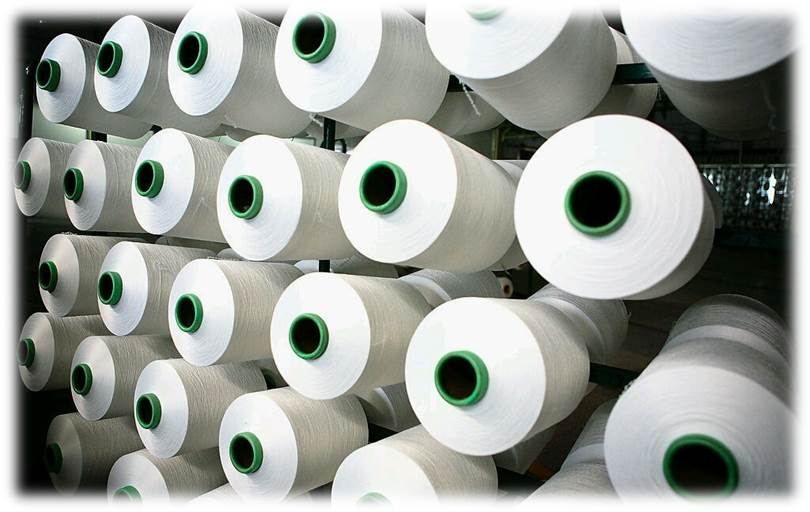
当前课程知识点:Basic Molecular Biology > Chapter 1 The material basis of genetic information > C1-Lecture 2 The nature of genetic material > Key points C1-L2 The nature of genetic material
返回《Basic Molecular Biology 》慕课在线视频课程列表
Introduction
Both DNA and RNA are known as nucleic acids. They have been given this name for the simple reason that they are made up of structures called nucleotides. Those nucleotides, themselves comprising a number of components, bond together to form the double‐helix first discovered by the scientists James Watson and Francis Crick in 1956. This discovery won the two scientists the Nobel Prize. For now, when we discuss nucleic acids you should assume we are mainly discussing DNA rather than RNA, which serve as the genetic material for the vast majority of living organisms. In this topic section, we will begin our discussion at a more elementary level, investigating the structure of the nucleic acids DNA and RNA. As DNA and RNA are the major molecules of molecular biology, understanding their structure is critical to understanding the mechanisms of gene replication and protein synthesis.
The key points of this section include:
I. The components of nucleic acids
▪ Three components in each nucleotide, a sugar molecule, a nitrogenous base and a phosphate group.
▪ The Biological significance of the different pentose in DNA and RNA
▪ Nucleosides and nucleotides
▪ Nomenclature and classification of nucleotides
▪ Mainly two types of nucleic acids are present in nucleus which involve in heredity process; DNA (deoxyribose nucleic acid) and RNA (ribose nucleic acid).
II. Primary structure of nucleic acids
▪ Nucleic acids Is Composed of Polynucleotide Chains
▪ Nucleotides join together through phosphodiester linkages between the 5' and 3' carbon atoms to form nucleic acids.
▪ The sugar‐phosphate backbone of the nucleic acids made up of sugar and phosphate residue arranged in an alternate manner.
III. The phosphate functional group gives DNA and RNA the property of an acid (a substance that releases an H+ ion or proton in solution) at physiological pH, hence the name “nucleic acid.”
IV. Significance of the 5’→3’ directionality of a nucleic acid.
返回《Basic Molecular Biology 》慕课在线视频列表
- C1-Lecture 1 The past and present journey of molecular biology
--Key points C1-L1 The past and present journey of molecular biology
--Video-C1-L1 The past and present journey of molecular biology
--Lecture 1-Homework
-C1-Lecture 2 The nature of genetic material
--Key points C1-L2 The nature of genetic material
--Video-C1-L2 The nature of genetic material
--C1-Lecture 2-Homework
-C1-Lecture 3 Amazing DNA double helix
--Key points C1-L3 Amazing DNA double helix
--Video C1-L3 Amazing DNA double helix
--C1-Lecture 3-Homework
-C1-Lecture 4 Supercoiled DNA
--Key points C1-L4 Supercoiled DNA
--C1-Lecture 4-Homework
-C1-Lecture 5 Denaturation, renaturation and hybridization
--Key points C1-L5 Denaturation, renaturation and hybridization
--Video C1-L5 Denaturation, renaturation and hybridization
--C1-Lecture 5-Homework
-C1-Lecture 6 Nucleic acids extraction and gel electrophoresis
--Key points C1-L6 Nucleic acid extraction and gel electrophoresis
--Video C1-L6 Nucleic acid extraction and gel electrophoresis
--C1-Lecture 6-Homework
-Chapter 1 Test
-Learning resources
-- References
-C2-Lecture 1 Genome does not equal to chromosome
--Key points C2-L1 Genomes are not equal to chromosomes
--Video C2-L1 Genomes are not equal to chromosomes
--Discussion C2-L1 Genomes are not equal to chromosomes
--C2-Lecture 1-Homework
-C2-Lecture 2 Nucleosomes and their Assembly
--Key points C2-L2 Nucleosomes and their Assembly
--Video C2-L2 Nucleosomes and their Assembly
--Discussion C2-L2 Nucleosomes and their Assembly
--C2-Lecture 2-Homework
-C2-Lecture 3 Higher order chromatin structure
--Key points C2-L3 Higher order chromatin structure
--Video C2-L3 Higher order chromatin structure
--Discussion C2-L3 Higher order chromatin structure
--C2-Lecture 3-Homework
-C2-Lecture 4 Chromatin modification and remodeling
--Key points C2-L4 Chromatin modification and remodeling
--Video C2-L4 Chromatin modification and remodeling
--Discussion C2-L4 Chromatin modification and remodeling
--C2-Lecture 4-Homework
-Chapter 2 Tests
-Learning resources
-C3-Lecture 1 Semiconservative DNA replication
--Key points C3-L1 Semiconservative DNA replication
--Video C3-L1 Semiconservative DNA replication
--Discussion C3-L1 Semiconservative DNA replication
--C3-Lecture1 Homework
-C3-Lecture 2 The mechanism of DNA polymerase
--Key points C3-L2 The mechanism of DNA polymerase
--Video C3-L2 The mechanism of DNA polymerase
--Discussion C3-L2 The mechanism of DNA polymerase
--C3-Lecture 2-Homework
-C3-Lecture 3 Process of DNA replication
--Key points C3-L3 Process of DNA replication
--Video C3-L3 Process of DNA replication
--Discussion C3-L3 Process of DNA replication
--C3-Lecture 3-Homework
-C3-Lecture 4 Regulation of DNA replication initiation
--Key points C3-L4 Regulation of DNA replication initiation
--Video C3-L4 Regulation of DNA replication initiation
--Discussion C3-L4 Regulation of DNA replication initiation
--C3-Lecture 4-Homework
-C3-Lecture 5 The end replication problem and telomere
--Key points C3-L5 The end replication problem and telomere
--Video C3-L5 The end replication problem and telomere
--Discussion C3-L5 The end replication problem and telomere
--C3-Lecture 5-Homework
-C3-Lecture 6 Let’s “cook” DNA
--Video C3-L6 Let’s “cook” DNA
--Discussion C3-L6 Let’s “cook” DNA
--C3-Lecture 6-Homework
- Chapter 3 Tests
-Learning resources
-C4-Lecture 1 Replication errors and the mismatch repair system
--Key points 4-1 Replication errors and the mismatch repair system
--Video 4-1 Replication errors and the mismatch repair system
--Discussion 4-1 Replication errors and the mismatch repair system
--C4-Lecture 1-Homework
-C4-Lecture 2 DNA damage
--C4-Lecture 2-Homework
-C4-Lecture 3 DNA Repair
--C4-Lecture 3-Homework
-C4-Lecture 4 DNA Homologous Recombination
--Key points 4-4 DNA Homologous Recombination
--Video 4-4 DNA Homologous Recombination
--Discussion 4-4 DNA Homologous Recombination
--C4-Lecture 4-Homework
-C4-Lecture 5 Changing the natural gene sequences
--Key points 4-5 Changing the natural gene sequences
--Video 4-5 Changing the natural gene sequences
--Discussion 4-5 Changing the natural gene sequences
-Chapter 4 test
- Learning resources
-C5-Lecture 1 RNA polymerase
--Key points 5-1 RNA polymerase
--Discussion 5-1 RNA polymerase
--C5-Lecture 1-Homework
-C5-Lecture 2 Transcription process in prokaryotes
--Key points 5-2 Transcription process in prokaryotes
--Video 5-2 Transcription process in prokaryotes
--Discussion 5-2 Transcription process in prokaryotes
--C5-Lecture 2-Homework
-C5-Lecture 3 Transcriptional regulation in bacterial I: Lac operon
--Key points 5-3 Transcriptional regulation in bacterial I: Lac operon
--Video 5-3 Transcriptional regulation in bacterial I: Lac operon
--Discussion 5-3 Transcriptional regulation in bacterial I: Lac operon
--C5-Lecture 3-Homework
-C5-Lecture 4 Transcriptional regulation in bacterial II: Tryptophan operon
--Key points 5-4 Transcriptional regulation in bacterial II: Tryptophan operon
--Video 5-4 Transcriptional regulation in bacterial II: Tryptophan operon
--Discussion 5-4 Transcriptional regulation in bacterial II: Tryptophan operon
--C5-Lecture 4-Homework
-Chapter 5 Test
-Learning resources
-Lecture 1 Eukaryotic RNA polymerase and promoter
--Key points 6-1 Eukaryotic RNA polymerase and promoter
--Video 6-1 Eukaryotic RNA polymerase and promoter
--Discussion 6-1 Eukaryotic RNA polymerase and promoter
--C6-Lecture 1-Homework
-Lecture 2 Transcription process in eukaryotic cell
--Key points 6-2 Transcription process in eukaryotic cell
--Video 6-2 Transcription process in eukaryotic cell
--Discussion 6-2 Transcription process in eukaryotic cell
--C6-Lecture 2-Homework
-Lecture 3 Transcription factors of eukaryotic cell
--Key points 6-3 Transcription factors of eukaryotic cell
--Video 6-3 Transcription factors of eukaryotic cell
--Discussion 6-3 Transcription factors of eukaryotic cell
--C6-Lecture 3-Homework
-Lecture 4 Epigenetic Regulation of gene expression
--Key points 6-4 Epigenetic Regulation of gene expression
--Video 6-4 Epigenetic Regulation of gene expression
--Discussion 6-4 Epigenetic Regulation of gene expression
--C6-Lecture 4-Homework
-Chapter 6 Test
-Learning resources
-Lecture 1 RNA splicing
--C7-Lecutre 1-Homework
-Lecture 2 Cotranscriptional processing of nuclear pre-mRNA
--Key points 7-2 Cotranscriptional processing of nuclear pre-mRNA
--Video 7-2 Cotranscriptional processing of nuclear pre-mRNA
--Discussion 7-2 Cotranscriptional processing of nuclear pre-mRNA
--C7-Lecture 2-Homework
-Lecture 3 One gene one protein? Alternative RNA splicing
--Key points 7-3 One gene one protein? Alternative RNA splicing
--Video 7-3 One gene one protein? Alternative RNA splicing
--Discussion 7-3 One gene one protein? Alternative RNA splicing
--C7-Lecture 3-Homework
-Lecture 4 “Seeing” RNA
-C7-Lecture 4-Homework
-Chapter 7 Test
-Learning Resources
-Lecture 1 Genetic codons and ribosome
--Key points 8-1 Genetic codons and ribosome
--Video 8-1 Genetic codons and ribosome
--Discussion 8-1 Genetic codons and ribosome
--C8-Lecture 1-Homework
-Lecture 2 Process of translation
--Key points 8-2 Process of translation
--Video 8-2 Process of translation
--Discussion 8-2 Process of translation
--C8-Lecture 2-Homework
-Lecture 3 Regulation of gene expression at Translational level
--Key points 8-3 Regulation of gene expression at Translational level
--Video 8-3 Regulation of gene expression at Translational level
--Discussion 8-3 Regulation of gene expression at Translational level
--C8-Lecture 3-Homework
-Lecture 4 Looking for your protein
--Key points 8-4 Looking for your protein
--Video 8-4 Looking for your protein
-Chapter 8 Test
-Learning resources
--SDS-PAGE
-Final Exam




